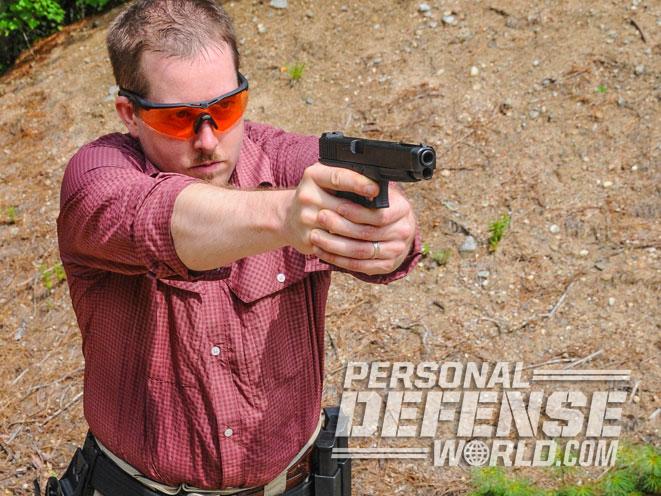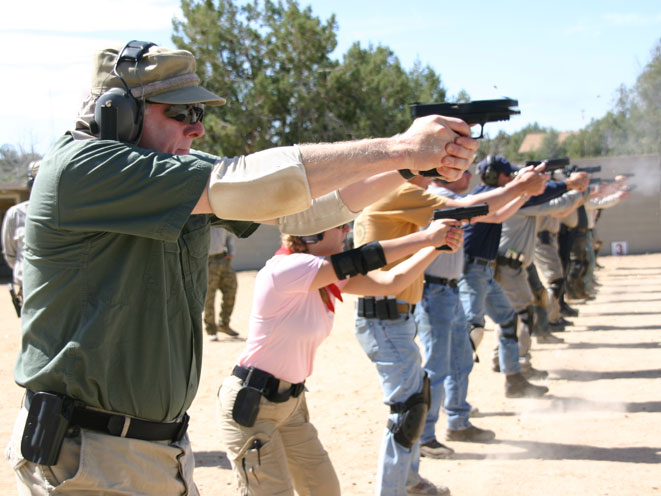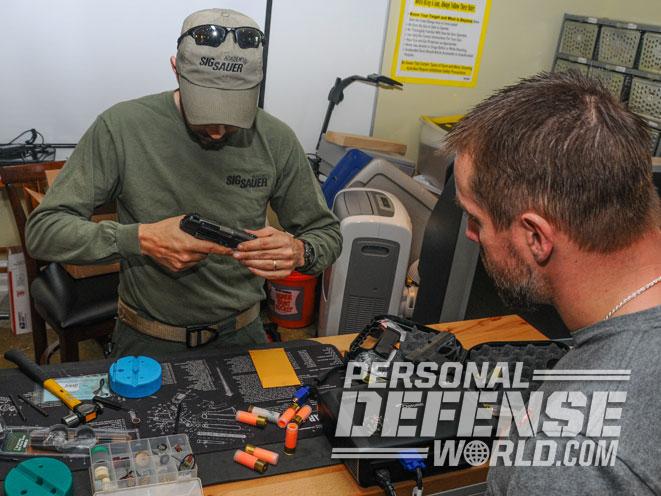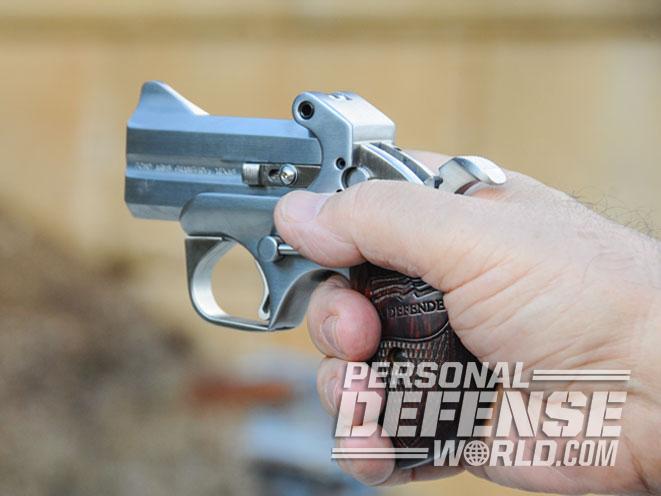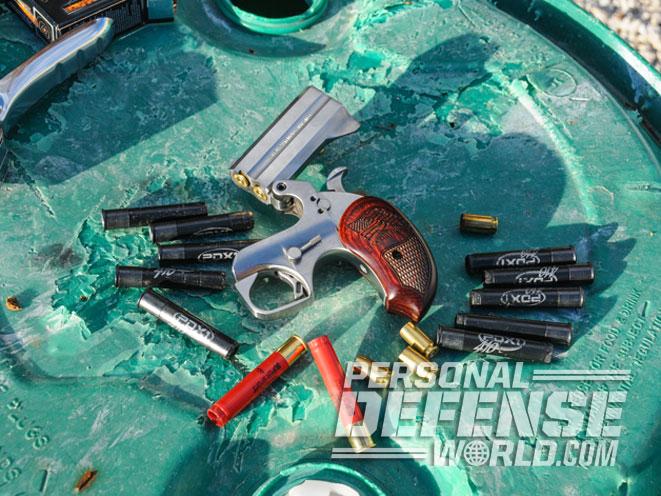When you tame recoil, you have less reason to flinch—and you’ll enjoy shooting more. This, of course, leads to better performance and efficacy should you need to defend your life. Here are five ways to tame recoil, and they’re pretty easy.
Grip
Hold your handgun as high up the grip—as close to the bore axis—as you comfortably can. Ensure that any of the pistol’s moving parts can still function without your hand in the way. The closer your hand is to the bore axis, the less torque your firearm can generate, and the recoil will feel like a push instead of a wrist snap.
Advertisement — Continue Reading Below
RELATED STORY: Course Range Gear – What to Pack When Attending a Handgun Training Class
Lighter Loads
Always practice with the ammunition you use for defense, but for higher-volume practice, look for lower-power target ammunition. It’s more pleasant to shoot, generally less expensive and won’t hide mistakes (like flinching) as easily.
Advertisement — Continue Reading Below
Add-Ons
Search the Internet for your make and model of firearm and the words “recoil reducer.” For many firearms there are buffers, springs and other components designed specifically to reduce recoil. Read the reviews to find a trusted product. Have a good gunsmith install it and explain how it works.
RELATED STORY: 3 Range Drills for Developing Accuracy, Speed & the Ability to Shoot Under Pressure
Advertisement — Continue Reading Below
Mind Tricks
Train yourself to want to make the gun fire and cycle, and to desire it to do so. That prepares you for what it will do, instead of fearing that it’ll hurt or be uncomfortable, and gets you out in front of the aversive experience. That actually helps your mind deal with recoil. Seriously.
Larger Grips
Advertisement — Continue Reading Below
If you can change the gun’s grips, install the largest grips that are still comfortable and allow you to manipulate the controls. This helps spread the recoil energy over a larger part of your hand and takes the sting out of recoil.
RELATED STORY: Shooting Tips from USMC Marksman Brian Zins
